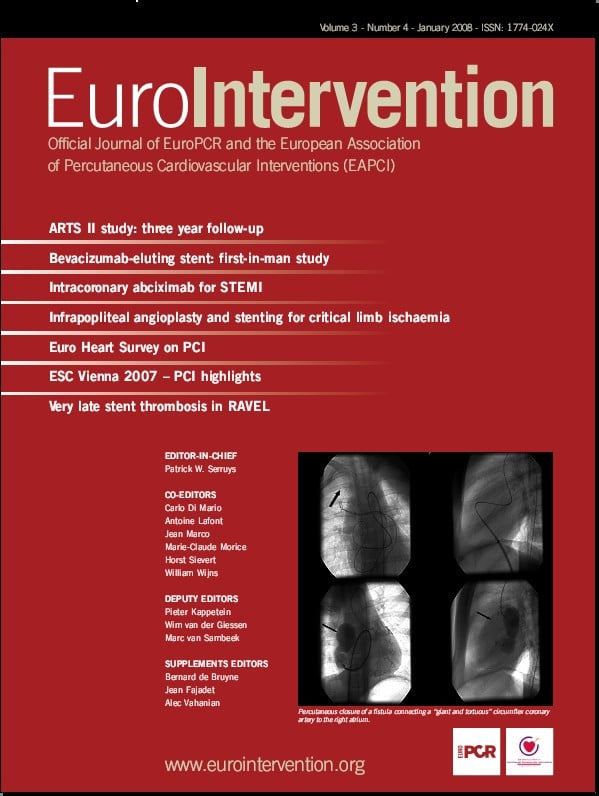May you have the hindsight to know where you’ve been,
The foresight to know where you are going,
And the insight to know when you have gone too far
Old Irish Saying
Interventional cardiology has made rapid advances in the last three decades and has contributed immensely to patient care1. Bare metal stents and subsequently drug-eluting coronary stents (DES) have surmounted the major obstacles, abrupt vessel closure and restenosis (to a large extent), during this evolution. However, evidence from recently reported trials2,3, and the widely publicised concerns of late thrombosis associated with DES4,5 have dampened the interventionalist’s enthusiasm for their use of implantation in patients with stable coronary disease. The data for 2005 presented by the ESC Working Group on Interventional Cardiology in this issue of the Journal6 may offer some important insights into the antecedents of the current imbroglio.
With rapid advances in technology and hardware, interventional procedures have become less and less daunting. This has lead to an exponential increase in the number of procedures and their complexity. Most striking is the doubling of stent use over five years to more than 800,000 in 20056,7. Drug eluting stents have been adopted quickly (too quickly, some would say) since their introduction. The mean DES usage rate of 26% does not accurately reflect the overall picture because of the wide variability in the volumes of procedures among the surveyed countries. The Scandinavian countries for example have rapidly scaled up DES use to rates in excess of 75%. Concurrently, the rates of primary angioplasty for myocardial infarction have steadily increased from levels as low as 11% in 2000 to 19% in 20048. In this scenario, the initial optimism surrounding DES results led to the change in clinical practice outpacing the generation of evidence. Widespread use across all subsets of patients and lesions, some of which we would now consider “off-label” was therefore clearly inevitable. In hindsight, this sequence of events set the alarm bells ringing in 2006.
An important trend that we would like to highlight is the favour that “ad-hoc” angioplasty has found among interventional cardiologists. “Ad-hoc” angioplasty increased from a modest 25% in 1992 to 65% in 2005, with some countries reporting rates as high as 98% (Spain, 2004)6-8. In our view, this trend represents the single most important impediment to evidence-based care. “Ad-hoc” angioplasty encourages lesion-based decision making in place of overall risk-benefit assessment and clinical decision-making as advocated by recent randomised trials2,3. It also increases the risk of bleeding complications because of indiscriminate clopidogrel loading9. While the exigencies of cost-effectiveness dictate otherwise, we advocate restricting this strategy to only the most suitable patients (such as those with known coronary anatomy on invasive or non-invasive imaging, and in the setting of ACS). Pause and dialogue with the patient are the key elements so as to prevent the “oculostenotic” and “auditory-stenotic” reflexes from coming into play.
The lesson for all of us is that, while “gut-feeling” stands us in good stead at times of crisis, our practice needs to stay in tune with the available evidence, in order for our patients to reap the maximum benefit in the long run.

